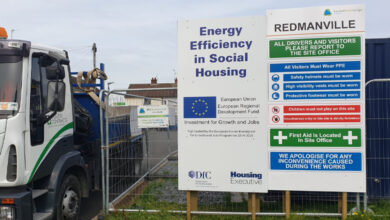Cutting constituencies
Peter Cheney weighs up the pros, cons and numbers in the drive for fewer seats.
A smaller Assembly is on the way due to plans for fewer constituencies. Political reasons in Britain are driving the change, to take effect after the next general election. MLAs and MPs share the same areas.
Conservatives have long complained that many Labour seats are too small and easily won. Some of the smallest seats, by electorate, are clustered in the Welsh valleys, inner city London and Merseyside. These were set up during the Industrial Revolution to represent growing cities and mining areas, but their populations have since declined.
Northern Ireland’s number of seats was 13 in 1922, then 12 from 1950, before going up to 17 in 1983 and 18 in 1997. At present, the Commons has 650 MPs, split as follows:
| England | 533 |
| Scotland | 59 |
| Wales | 40 |
| Northern Ireland | 18 |
The coalition’s Parliamentary Voting System and Constituencies Bill proposes a cut to 600 constituencies; its second reading is on 6 September. Proportionally by population, that number would be shared out as follows:
| England | 503 |
| Scotland | 50 |
| Wales | 29 |
| Northern Ireland | 17 |
This analysis uses rounded numbers, making up a total of 599. However, Scotland is guaranteed two small seats, to cover the remote Western Isles, and Orkney and Shetland. If that tally went up to 52, Northern Ireland could be squeezed down to 16 or 15.
Sir Reg Empey has predicted that any reduction may see a Belfast constituency abolished, due to their smaller size. Each one currently has 52,000 to 53,000 voters. At the May general election, the smallest in Northern Ireland was Belfast South (52,218) with Antrim North being the largest (73,938).
Until now, the ‘cut the Assembly’ debate has focused on the number of seats per constituency, assuming that the number of constituencies stays at 18, as shown below:
| Seats | MLA’s |
| 6 | 108 |
| 5 | 90 |
| 4 | 72 |
| 3 | 54 |
Fewer seats will even out differences in population and save some money; the standard MLA’s salary is £43,101 while MPs earn £65,738. However, representation would be less local with each member expected to do more constituency work. Smaller parties may lose out.
Dropping the number of constituencies, though, means a gentler decrease. Assuming six MLAs per seat, this trend appears:
| Constituencies | MLAs |
| 18 | 108 |
| 17 | 102 |
| 16 | 96 |
| 15 | 90 |
The DUP supports keeping 18 constituencies but having three or four MLAs per seat. Ulster Unionists and Alliance also support a smaller Assembly. The UUP sees a constituency cut as “inevitable” and seeks a “fair and equitable” outcome.
Sinn Féin is “not opposed” to looking at a constituency cut but says the Assembly’s large size is necessary to ensure the “broadest spectrum” of opinion. The SDLP has no set figures in mind but would examine proposals for “fairness, balance and equality of representation.”
The Greens, meanwhile, are calling for an independent commission to decide the number of constituencies and MLAs, as the review of local government showed that “party political interests can interfere with providing the best possible public service.”





